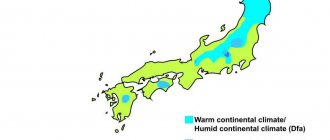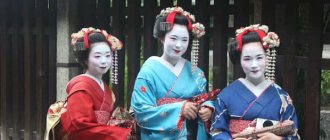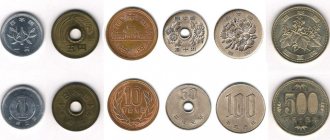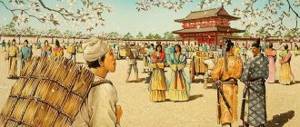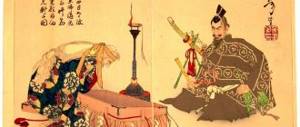What is yukata? What and when to wear it with? And where to buy?
The Japanese began wearing yukata in the Middle Ages. These were clothes you could relax in after taking a bath. Later, yukata became summer clothing for both indoors and outdoors.
1. What is yukata?
2. How does a yukata differ from a kimono?
3. How much does a yukata cost in Japan?
4. Where to buy a yukata?
5. Yukata accessories?
What is yukata?
Yukata is a type of summer kimono. It is simpler in style than a classic kimono.
The Japanese began wearing yukata in the Middle Ages. These were clothes you could relax in after taking a bath. Later, yukata became summer clothing for both indoors and outdoors.
Nowadays, the Japanese wear yukata when they go out to summer festivals, watch fireworks, or visit temples. Especially in historical cities like Kyoto, Kamakura, Kanazawa, Kurashiki or Tokyo, it is not uncommon to see both Japanese and foreigners walking around in yukata.
Outside of Japan, you may also have the opportunity to wear a yukata. It could be an anime festival or a cosplay show, a house party or a cultural exchange. You can also wear a yukata at home!
Compared to other types of kimono, yukata is very easy to wear. We can easily put it on ourselves. This does not require the help of a professional, as with other kimonos. In addition, yukata are very affordable.
Overall, if you like Japanese traditional clothing and would like to get to know it better, yukata is the best place to start!
What is the difference between a yukata and a kimono?
We said earlier that “yukata is a type of summer kimono.” Does this mean that yukata is a kimono? This is not entirely true. Let's understand the terminology.
Kimono (着物) is any Japanese clothing. The word itself consists of two characters: 着 - to wear and 物 - thing. Those. A kimono is a thing that is worn, or clothing. Before the arrival of Europeans and Western-style clothing in the country, the word “kimono” was used to describe any clothing. Afterwards, this word began to be used only in relation to Japanese-style clothing. Thus, clothing in Japan began to be divided into Western and traditional Japanese. The latter began to be called wafuku (和服 - literally Japanese clothing, as opposed to 洋服 - Western clothing). And although among the Japanese, kimono and wafuku mean the same thing, in the Russian-speaking tradition, the word “kimono” refers specifically to formal types of Japanese clothing, and the word “yukata”, respectively, refers to its less formal forms. We will also use this word in the Russian interpretation: “kimono” as formal traditional Japanese clothing (or wafuku), and “yukata” as summer traditional Japanese clothing.
Got it? Now let's see what the difference is between a kimono and a yukata.
- Season
Yukata is worn only in summer. The only exception is if you wear a yukata at home, and use it as a nightgown (that's right, yukata was used as sleepwear before the advent of pajamas!). For example, in most Japanese-style hotels and hot springs, guests are given a yukata so that they can change into clean clothes after a bath, dress up and enjoy their vacation without worrying about what to wear. Except in this case, passers-by in yukata can only be seen in summer.
Therefore, kimonos are worn less often in summer, but they can still be worn at any time of the year. For a kimono, the next point is much more important.
- Occasions and occasions for yukata and kimono
Yukata is clothing for entertainment. You can wear a yukata to a festival or a date, while traveling to historical sites in Japan and visiting a temple.
Kimonos are worn only on special or official occasions: weddings, official visits or receptions, various ceremonies (graduation, anniversary ceremony, etc.)
- Material
Since yukata is intended for summer, it is made from lighter material. Usually it is cotton. Recently they are also made from polyester. This material is highly breathable and dries quickly, so a polyester yukata will be comfortable in summer.
Kimono materials include silk, cotton and even wool. The kimono fabric is denser and practically does not allow air to pass through.
- Design
Since yukata are meant for entertaining and going out, they come in almost all colors and shapes. These can be calm colors with traditional patterns, or more colorful options with flowers, or even with characters. The patterns usually cover the entire yukata.
Kimonos can also combine different colors, but most often they will be deeper tones and traditional patterns. The ornament is only on the bottom of the robe and sometimes on the sleeves. The most striking type of kimono is the furisode (振袖 - long-sleeved kimono), which young girls wear for their coming of age ceremony at the age of 20.
- Underwear kimono
A thin white robe is most often worn under the yukata. It absorbs sweat and simplifies the mid-wash process. A yukata should not be hot, so there is no point in wearing a lot of things underneath.
As for the kimono, you will first have to wear several layers underneath: a robe over your naked body, an underskirt and a long robe, at a minimum.
National costume that has become clothing for special occasions
Almost everyone probably associates the phrase “Japanese national costume” with kimono. These days, Japanese people wear kimonos on special occasions, such as when presenting Olympic medals.
Tea ceremony and kimono: traditional tea service
The national costume is also worn during wedding ceremonies and other family celebrations; it is worn when practicing traditional arts such as the tea ceremony or the dance art of Nihon-buyo. Kimono is the work clothes of actors of the Kabuki theater and Noh theater, as well as people of other traditional professions: Shinto priests of kannushi, Buddhist monks, geishas and rakugo readers. Having given way to the more functional European clothing of everyday dress, the Japanese national costume is alive and well as a marker of traditional culture.
Initially, the word kimono (literally “what is worn”) meant any clothing. But when active borrowing of Western customs began in Japan in the middle of the 19th century, the need arose to call European and Japanese clothing differently, and the word kimono became a common name for Japanese clothing. But in the narrow sense of the word, a kimono is a long-skirted robe that reaches to the ankle. There are many varieties of it: from ceremonial and weekend multi-layered outfits to light summer yukata. The types of fabric from which kimonos are made also differ: silk, woolen fabric, cotton, linen; recently, synthetic kimonos have become popular, especially in rainy weather, which does not require such complex care as natural fabric.
Where to buy a yukata?
In Japan, yukata are sold all year round, but their popularity peaks, of course, in the summer. Both Rakuten and Amazon offer a wide selection of yukata. You can also look for a yukata you like in specialized stores:
https://www.kimonomachi.co.jp/
https://araiya.mobi/
(instructions on how to buy in specialized Japanese stores.)
Here you can look at several nice options for different budget categories that Japanese stores offer.
Women's Yukata
Bright, original sets of women's yukata can be found here
